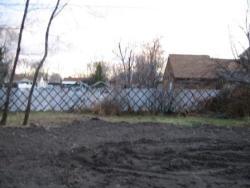RickCorey said:
But the point is well taken: I might NOT be adding as much QUICK Nitrogen as I used to think. Perhaps it is mostly slow-release N.
Sunset had some Starbucks coffee grounds analyzed. The NPK analysis of the coffee grounds was 2.28:0.06:0.6.
Quoting from the report:
"Each cubic yard of these coffee grounds contains a total of 10.31 lbs. nitrogen, of which 0.01 lb. (0.09%) are available. Thus, even though available nitrogen is considered deficient in this product, there still remains over 10 lbs. of total nitrogen per cubic yard of coffee grounds. Thus, nitrogen is primarily bound in the organic fraction and is unavailable to plants until soil microorganisms degrade the organic fraction. Through this process, the nitrogen is converted to plant available forms. Over the long term the coffee grounds will act like a slow release fertilizer providing long-term nitrogen input which can then be utilized by plants."
You can read the rest of the report here, it's quite interesting:
http://www.sunset.com/garden/e...
The pH was 6.2, but another article indicated for composting:
"A commonly held assumption states that coffee grounds are acidic, but this does
not hold true experimentally. While two studies on coffee ground composting
reported mildly acidic pHs of 4.6 and 5.26, others have measured neutral (7.7)
to somewhat alkaline (8.4) pH levels. One researcher found that the pH of soil
treated with coffee compost increased after 14 to 21 days of incubation, gradually decreasing thereafter. Obviously the pH of decomposing coffee grounds is not stable and one shouldn’t assume that it will always, or ever, be acidic." This is from Washington State U Extension at Payallup (Dr. Linda Chalker-Scott):
http://puyallup.wsu.edu/~linda...
A while back after I read the above I checked the pH of the coffee grounds straight from our coffee machine and it was 6.8. Decaf though, if that makes a difference!


